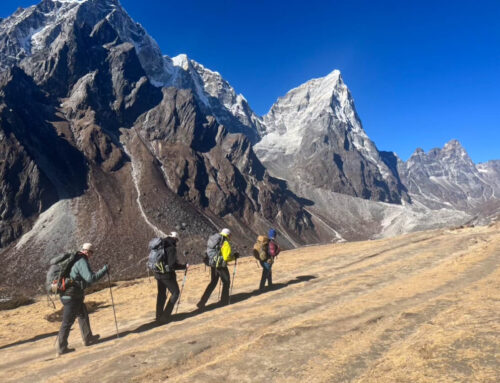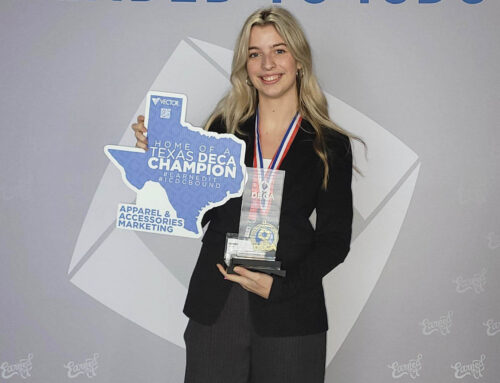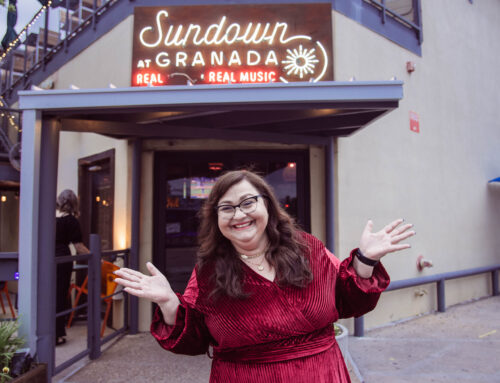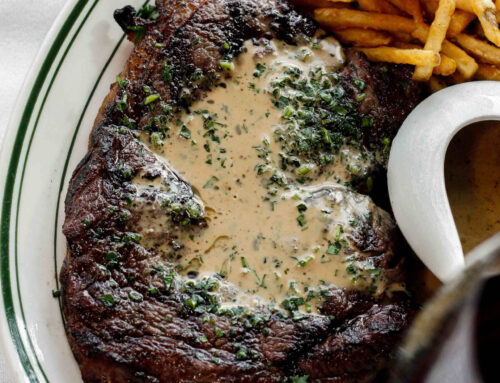Deep in the woods of West Texas, several hundred men and their young sons gather around a campfire.
“Oh, great spirit, if you are here and with us, give us a sign,” says a man clad in an elaborate feathered head-dress and fringed leather vest.
The loud bang of fireworks breaks the soft beat of a single drum, and the man asks the fathers and sons to place a single white feather in the fire and face one another.
“Just as you place the feather in the fire, your spirit will lead and guide those new braves of the White Rock Nation,” the chief says.
The scene could have been taken straight from a textbook about Native American culture and traditions. Instead, it’s a ceremony performed today by hundreds of fathers and sons marking the end of their membership in the White Rock/ Lake Highlands YMCA Indian Guides Program.
“What you have here is a bonding experience – quality time to spend with your son,” says Stan McGlothlin, who last month performed his final ceremony as chief of the 300-member neighborhood Indian Guides Program.
“The whole program is based upon a very pronounced emphasis on the family unit,” McGlothlin says.
The Neighborhood Nation
Over 500 members participate in the White Rock/Lake Highlands Indian Guide and companion Indian Princess programs, making it the third largest nation of the 21 Dallas-area YMCA branches, according to White Rock/Lake Highlands Y Director Wendy Barber.
One of the national objectives of the YMCA, “the strengthening of family structures by enhancing relationships and improving communication,” is being met with the guide programs, Barber says.
Due to the success of the Guide and Princess programs, which are open to children in kindergarten through third grade, Barber says the Y will begin this fall to offer Trailblazer and Trail Maiden programs for fathers and their nine- to 11-year-old sons and daughters.
“This allows the fathers to set time aside to have one-on-one time with their children,” Barber says.
Each nation plans several activities throughout the year, including the Guide/Princess induction ceremony and campfire, Fall and Spring camp-outs, father/child banquet, derby day races, hayride and skating parties.
Tribes of six to 10 dads meet with their son or daughter once or twice a month in a members’ home on a rotating basis. More than 30 tribes in each of the Indian Guide and Princess programs make up the White Rock/Lake Highlands Nation. Members usually are placed with a tribe according to where they live and the school they attend.
The one-hour monthly meetings include a brief ceremonial opening and closing, a chief’s talk, an activity or craft project and refreshments
Stories told during the meeting acquaint members with Indian lore and outdoor experiences, and “scouting reports” help younger children develop self-confidence to speak in front of others in a non-threatening setting, Barber says.
“I’m constantly getting positive feedback from parents in the program,” Barber says.
The Origin
The program was conceived in 1926 during a hunting trip attended by St. Louis YMCA Director Harold S. Keltner and his good friend, Ojibway Indian Joe Friday.
Friday told stories about how the Indian father raises his son, teaching him how to hunt, fish, walk hand-in-hand with nature, and to learn the meaning and purpose of life.
The comments impressed Keltner, and he arranged for Friday to work with him at the St. Louis YMCA. Keltner conceived the idea of a father and son program based upon the strong qualities of American Indian culture and life – dignity, patience, endurance, spirituality, harmony with nature, and concern for the family.
In 1954, father-daughter groups, now known as Y-Indian Princesses, emerged in the Y at Fresno, Calif.
Why It Works
Neighborhood resident Rob Braun, who is a member of both an Indian Guides and Indian Princesses tribe with son Russell, 6, and daughter Alexis, 8, says the program helps “foster and cement a relationship between a dad and his child.”
“I watched my five-year-old son grow to have more self-confidence and independence through the hikes, crafts and camp-outs,” Braun says.
Alexis Braun says she heard about the program through a friend and asked her dad to become a member.
“I’m glad I did – I like to spend time with my dad,” Braun says.
Braun says she especially likes going on the weekend camp-outs.
“We get to shoot B.B.’s and arrows, and sometimes we go swimming and ride horses,” she says.
Families become members of the Y prior to joining a Guides or Princesses program, Barber says. After joining the Y, the cost to join the Guides or Princesses program is about $25, which includes a start-up kit, activities and headband. The cost to attend one of the out-of-town camp-outs is approximately $35. Scholarships for needy families are available.
Barber says the three-year program is successful thanks to neighborhood parents who accept roles as chiefs and other tribal leaders.
Barber says one of the chiefs recently developed the Kachina Festival, a spring event created to involve the entire family, in which the tribe members and their fathers either decorate a totem pole or doll.
“We have a very active group of very creative leaders,” Barber says.
The Big Chie
McGlothlin, a lawyer for Dresser Industries, says he and son Preston, 6, joined the program three years ago. His four-year-old son Brett is a new member.
“This has given me a chance to spend some real time with my son,” McGlothlin says.
“Preston loves it – it teaches him the importance of the family unit and respect for nature,” he says.
Wife Jeanne likes the program, too, McGlothlin says.
“She especially likes it now because I’ll be taking both the boys on camp-outs, and it gives her some free time,” he says. McGlothlin says he accepted the role of White Rock/Lake Highlands Nation chief last year after consulting Preston.
“He said he wanted me to do it so he could wear the feathers,” McGlothlin says.
But there’s more to the role of chief than dressing up for ceremonies, McGlothlin says.
McGlothlin assigns duties to the tribal chiefs and presides over monthly “long-house” meetings, which are named after the Indian custom in which chiefs met in a long house to discuss issues relevant to the tribe.
The purpose of today’s long-house meetings isn’t much different. The meetings are an opportunity for chiefs to learn about upcoming nation events, share problems and find solutions, McGlothlin says.
The chief also works with the Y’s administrative staff and organizes recruiting sessions to boost the program’s membership.
Kerry Hogue, who was chosen by McGlothlin as this year’s chief, says he is excited about leading the neighborhood nation of tribes.
“I guess this means I get to have the most fun,” Hogue says. “I thought this would be a good opportunity for me to give something back to the program.”
Hogue, an architect and Lake Highlands resident, says he and eight-year-old twin sons James and Justin joined the program three years ago. Son Stevie, 5, will participate this year.
“The focus is to get fathers and sons on a level where they can relate to each other at an earlier age,” Hogue says.
Children who have grown up in urban areas have access to horseback riding, fishing, and archery through the program’s camp-outs and other activities, Hogue says.
“It gives fathers an opportunity to see their sons in a different light,” Hogue says.
During his one-year term as chief, Hogue says he will continue the activities implemented by his predecessor, including ceremonial council fires, which are held at camp-outs and meetings.
“This is an outstanding program that has a lot to offer,” Hogue says.
“Just knowing that kids will be able to do something different with their fathers is worth it.”





